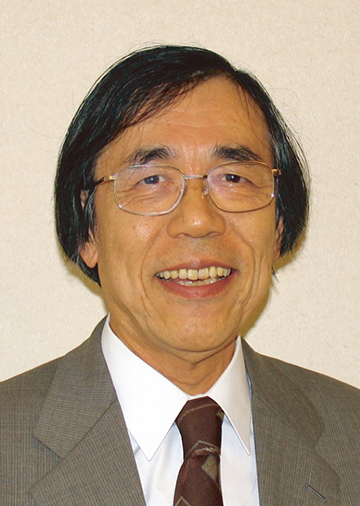

Director of RIKEN Center for Developmental Biology

Distinguished Professor, The Burnham Institute
Cell adhesion forms the basis in construction of tissues and organs. It is classified to cell-to-cell adhesion and cell-to-extracellular-matrix adhesion. Dr. Masatoshi Takeichi and Dr. Erkki Ruoslahti played the decisive roles in elucidating the molecular mechanism of cell-to-cell adhesion and that of cell-to-extracellular-matrix adhesion respectively.
Dr. Takeichi at first succeeded in dissecting cell-to-cell adhesion into a calcium-dependent one and a calcium-independent one. Then, he concentrated his efforts on elucidating the mechanism of calcium-dependent cell adhesion, which plays the major role in specific cell sorting. Dr. Takeichi found that different cells have different calcium-dependent cell-adhesion molecules, and named the epithelial cell-type molecule E-cadherin, the nerve cell-type one N-cadherin and the extra-embryonic-cell-type one P-cadherin. Then, he demonstrated that E-cadherin is directly responsible for the adhesion by transfecting the molecularly cloned E-cadherin cDNA. Cadherins were found to be structurally related molecules and form a protein family. Dr. Takeichi verified homophilic binding of cadherins, namely E to E and N to N etc. Furthermore, he examined the expression of cadherins during embryogenesis and established that homophilic binding of cadherins is the basis of selective cell-to-cell adhesion.
Dr. Ruoslahti analyzed the functional domains of fibronectin and he succeeded in narrowing down the active domain to identify RGD sequence as the cell binding site. Then he proceeded to isolate the membrane molecule that binds fibronectin, namely the fibronectin receptor. He accomplished the difficult task by a brilliant method consisting of elution of the receptor from the fibronectin column by the RGD peptide. Dr. Ruoslahti revealed that the fibronectin receptor is a heterodimeric protein composed of two polypeptide chains. Then, he identified the vitronectin receptor and showed that it is structurally related to the fibronectin receptor. Now these molecules are known to belong to the integrin family.
Both Dr. Takeichi and Dr. Ruoslahti pinpointed the essential core processes in the complex phenomena of cell adhesion and succeeded in elucidating their mechanisms at the molecular level. Their accomplishments are expected to fundamentally contribute to elucidating the etiology and developing therapy of serious diseases such as malignant tumors.